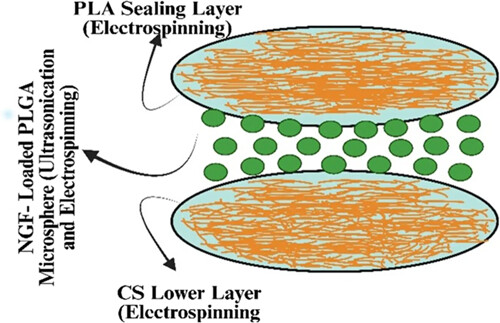MedComm-Biomaterials and Applications | Management of peripheral nerve injuries using natural based biomaterials and their derivatives: Advances and prospective

Open the phone and scan

The schematic diagram shown above depicts the drug distribution composite scaffold with a sandwich-like structure. (Figure is drawn from Bio render software).
The management of peripheral nerve injuries is an important concern due to the their incidence of nerve lesions and inappropriate regeneration that follows severe injuries, which ultimately reduces the lives of patients with this condition. Different strategies have been investigated to repair severe nerve injuries with the improvement of motor and sensory regeneration. Although autograft remains the gold standard technique, an emerging number of research articles concerning nerve conduit use have been reported in the last few years. Nerve conduits aim to overcome autograft disadvantages, but they satisfy some requirements to be suitable for nerve repair. A universal ideal conduit does not exist since conduit properties have to be evaluated case by case; nevertheless, because of their high biocompatibility and biodegradability, natural-based biomaterials have great potential to be used to produce nerve guides. Although they have many characteristics with synthetic biomaterials, natural-based biomaterials are preferable because of their extraction sources; indeed, these biomaterials are obtained from different renewable sources or food waste, thus reducing environmental impact and enhancing sustainability in comparison to synthetic ones. This review highlights the recent progress in the development of natural-based biomaterials and their derivatives for the management of peripheral nerve injuries.
Article Access: https://doi.org/10.1002/mba2.72
More about MedComm-Biomaterials and Applications: https://onlinelibrary.wiley.com/journal/2769643x
Looking forward to your contributions.


